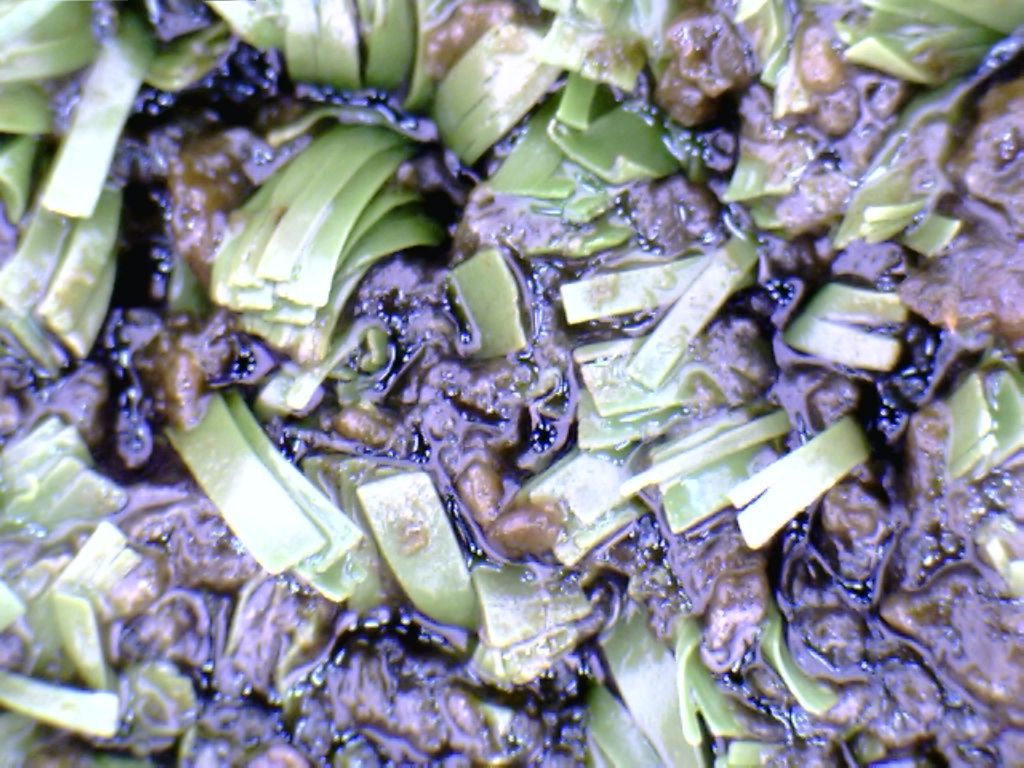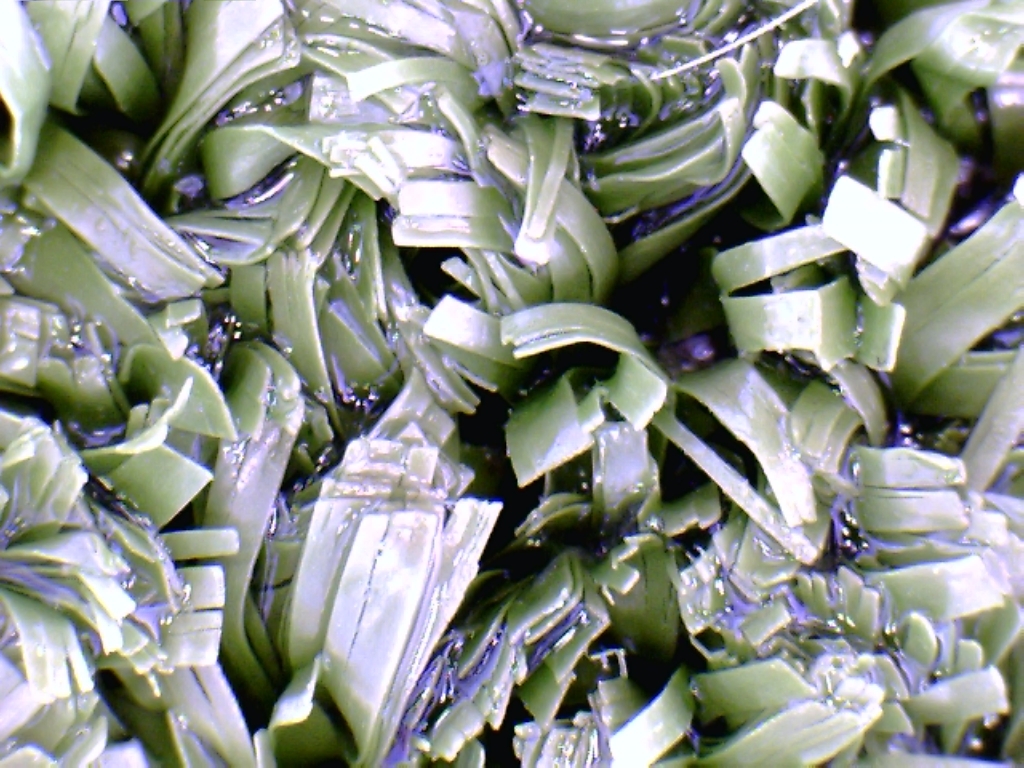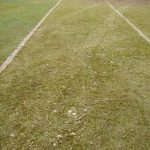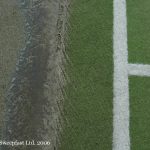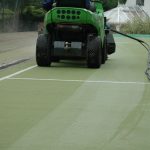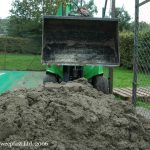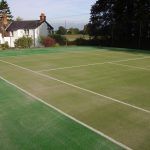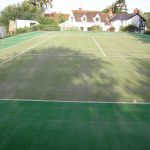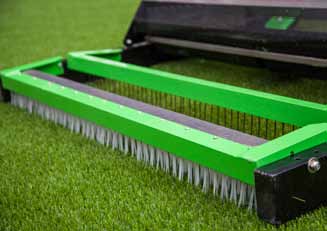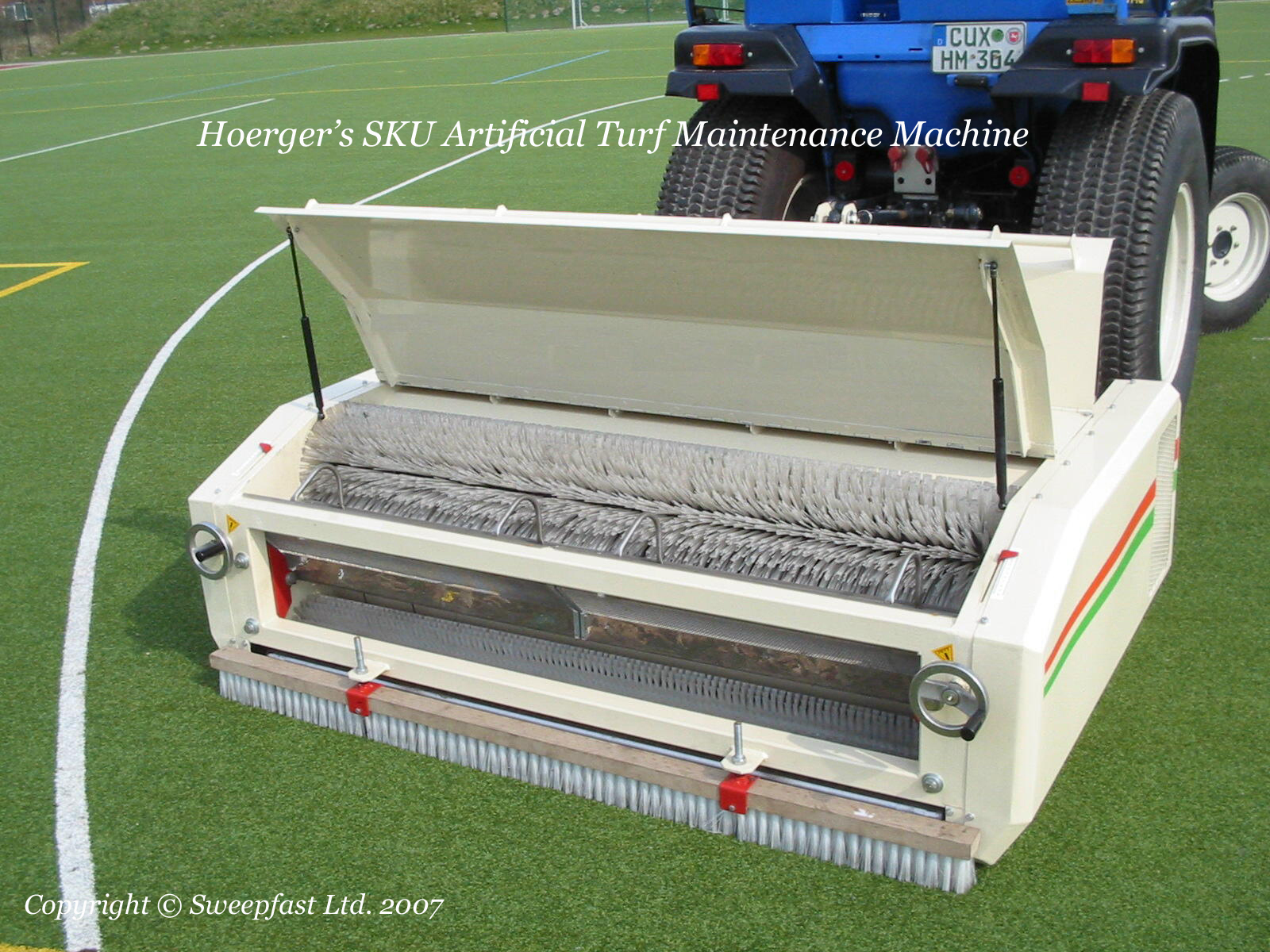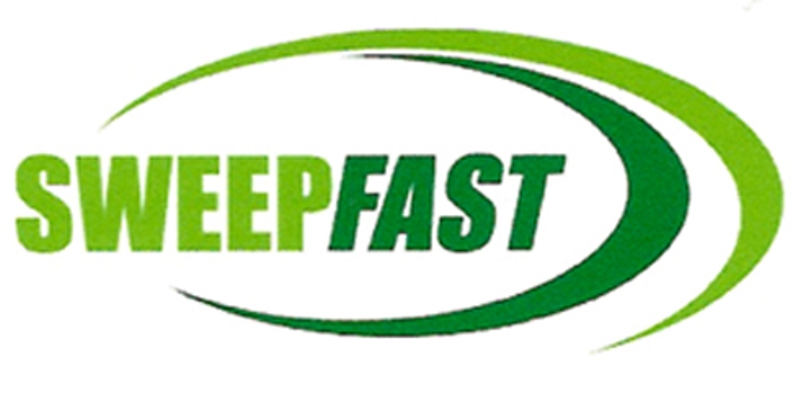Water based or water filled synthetic grass pitches are another variation on the old Astroturf idea for artificial sports surfaces that can be played on safely all year round irrespective of the weather conditions, with no detrimental effect on the surface. These water based surfaces are much used in the sport of Hockey, and the principle is that they are filled with water from overhead cannons prior to play, this acts as a wearing factor and it also affects play and it is essential that they are kept wet. However this amount of water will, if left untreated, lead to algae growth as debris and water gather in the base of the surface inhibiting free drainage and causing even further build up of contaminants and algae. All this will need treatment immediately if your valuable asset is to be kept in operation. Treatment of the water from the cannons is the front line of attack and careful choice of chemicals is essential. The surface is permanently wet so a chemical that requires high volumes of water to be effective is the main criteria here, however many of these water based pitches are near a water source, such as a river, or stream, or drains that lead to a water source and this in itself will rule out many.
So this leads to another question, how on earth do we control this ever persistent problem. The simple solution is to remove the contaminants along with the algae by employing a contractor such as Sweepfast who have years of experience in this field, and who use purpose built systems and not just converted street sweepers.
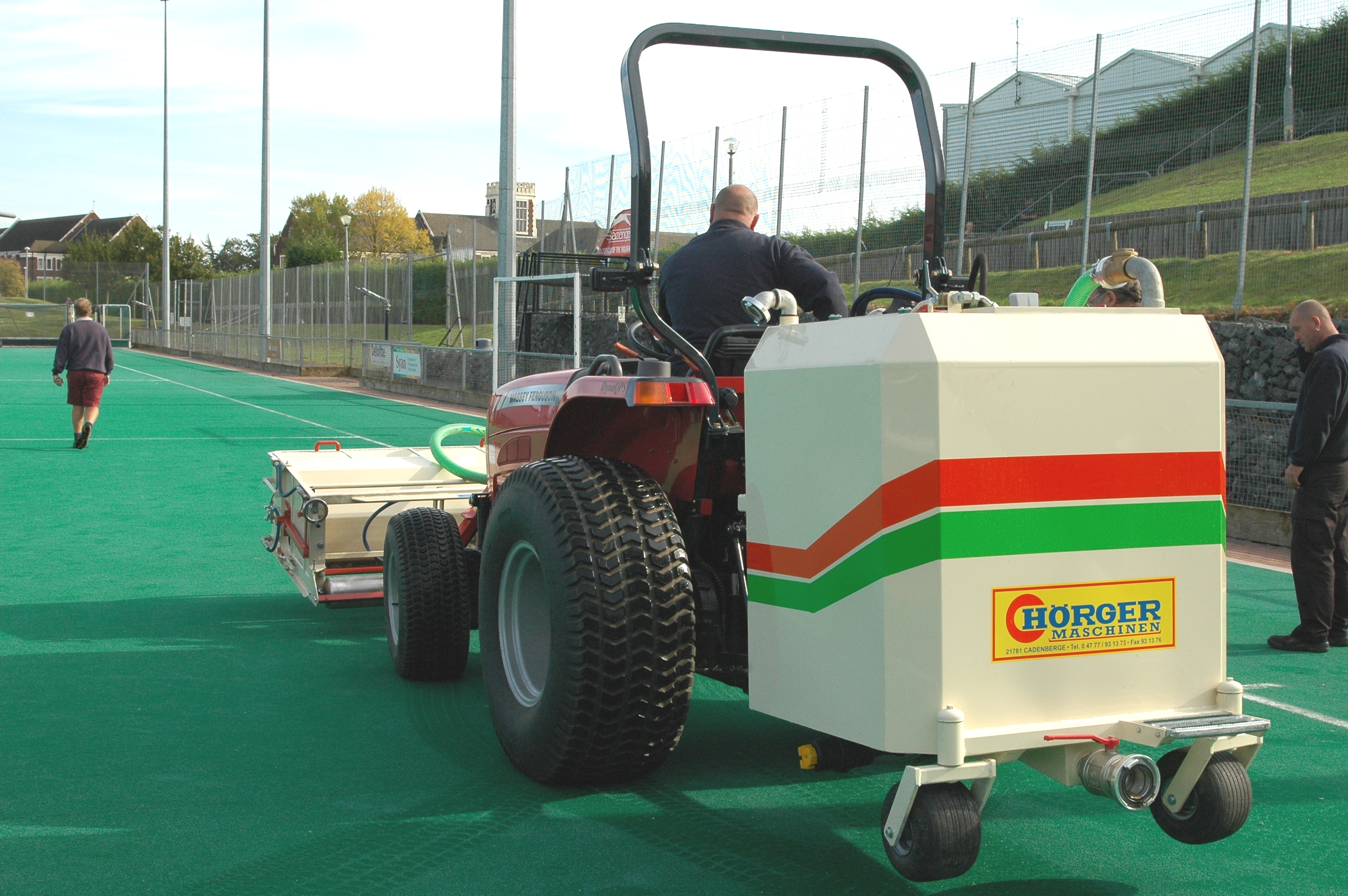
The system Sweepfast use is built by the specialist machinery constructors Hoerger in Germany and is called the SKR system. This uses the same pump and tank recovery unit as the KBR for cleaning running tracks, however the front head unit is completely different and is built just to clean water based surfaces. It utilises an extremely powerful pump which drives high volume water under high pressure into the surface displacing the algae, debris, moss and remaining water to the surface
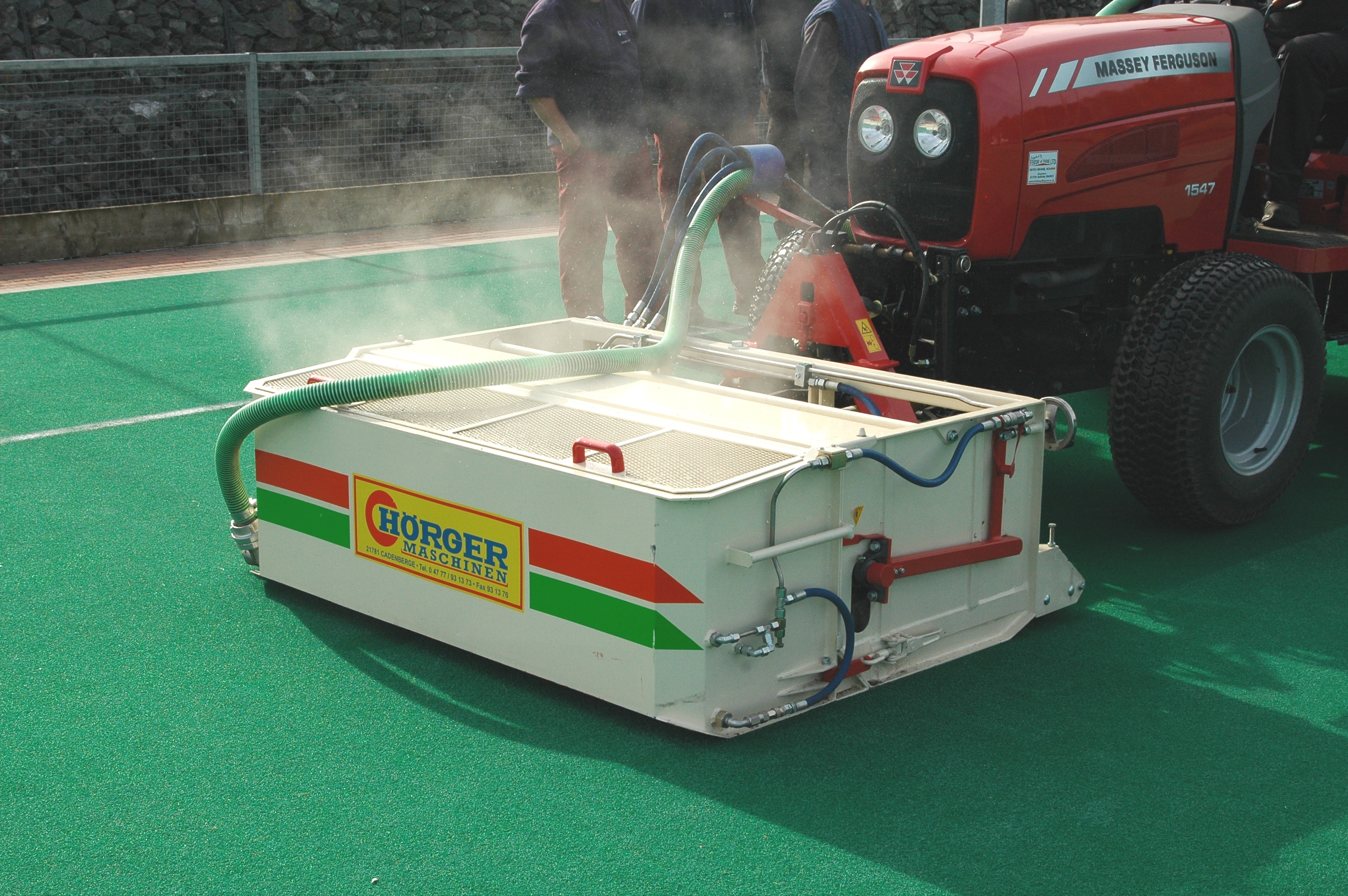
where it is immediately picked up by the head unit, this pumps it straight into the holding tank which is emptied as soon as it’s full into a suitable drainage area.
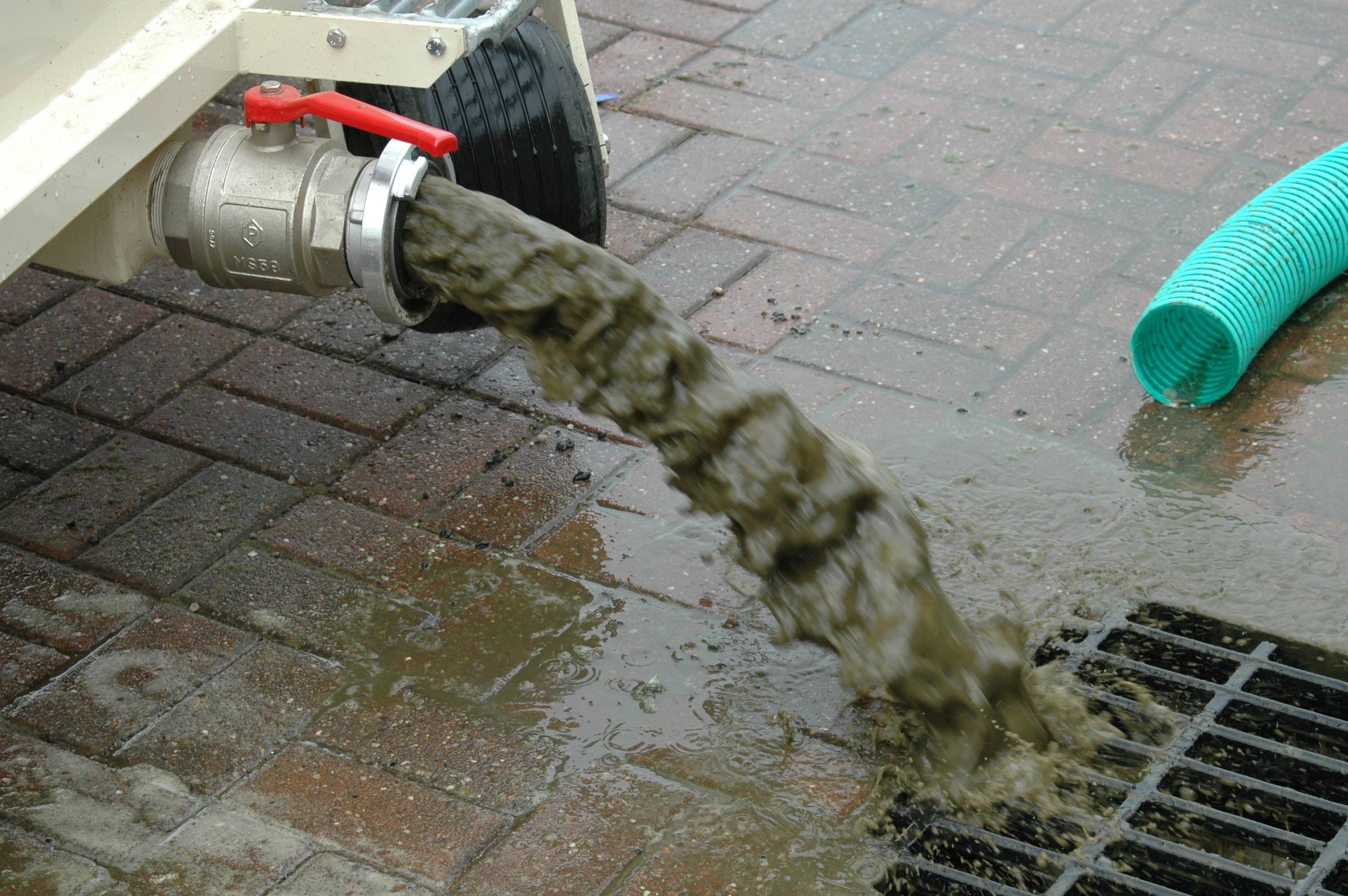
Microscope close ups of a contaminated pitch before and after the deep clean process are below, this particular pitch was in a dreadful condition with untreated algae almost filling the pile to the top. In this instance it is always best to dry the pitch down, treat with a suitable chemical about 10 days prior to the deep clean. The results below explain why.
